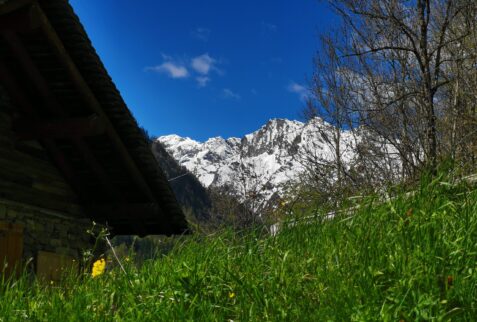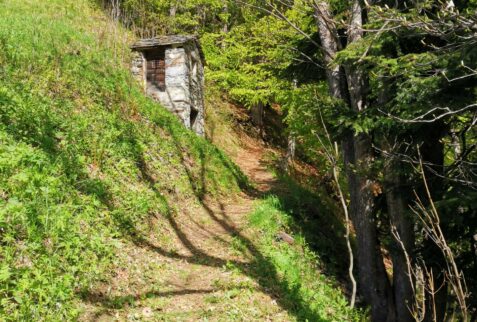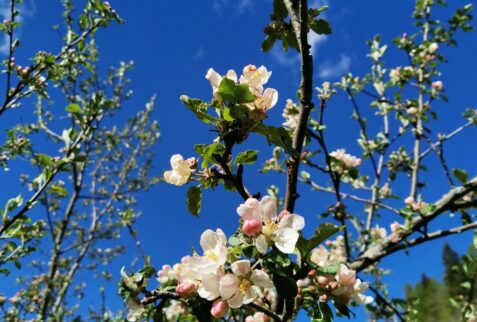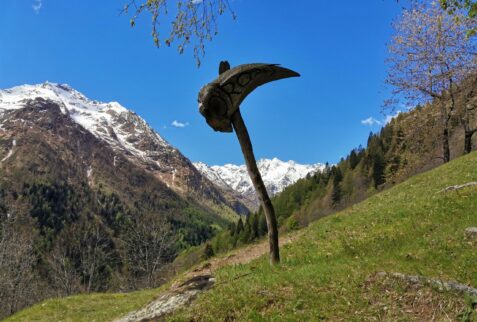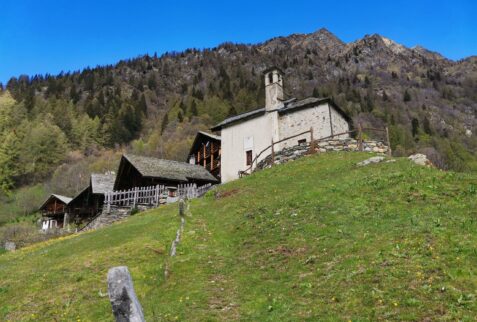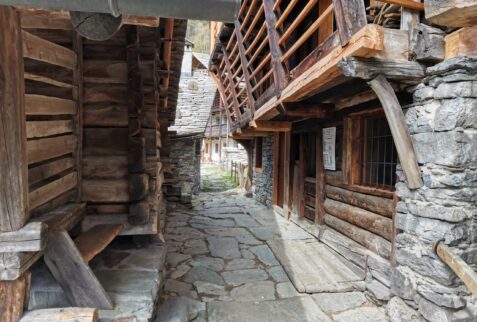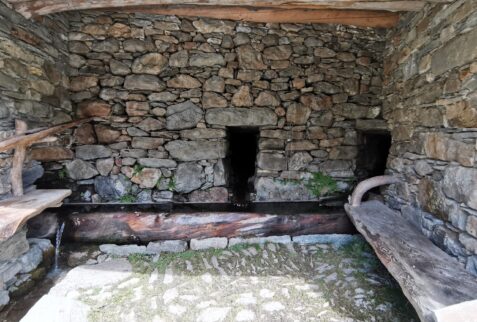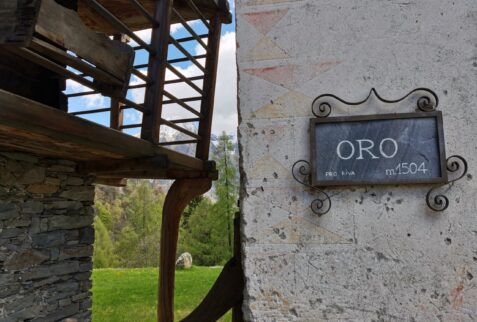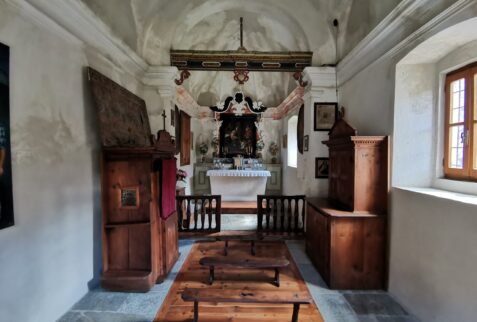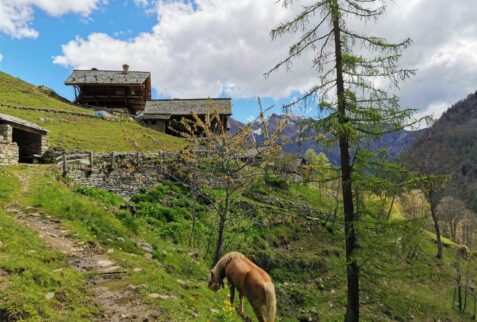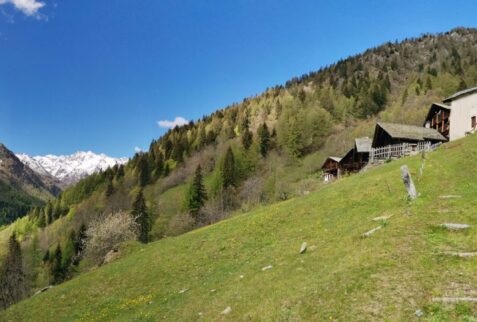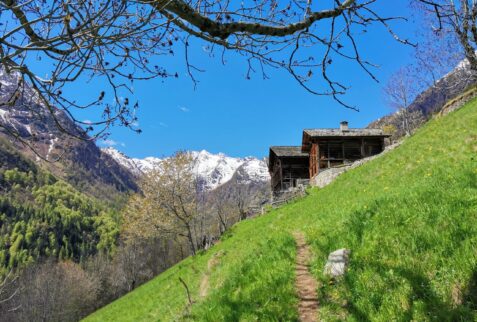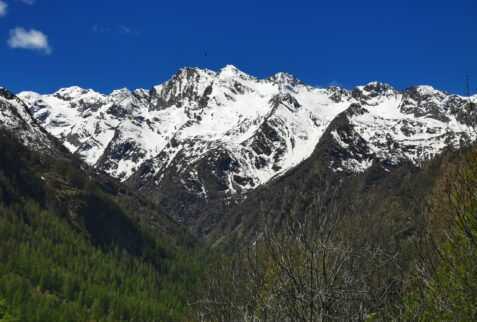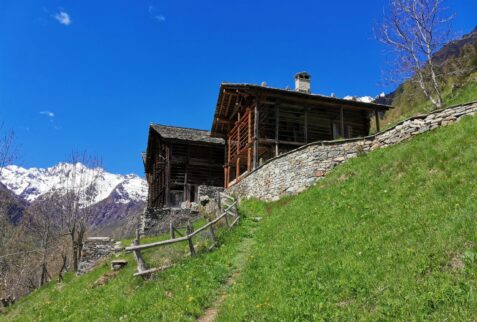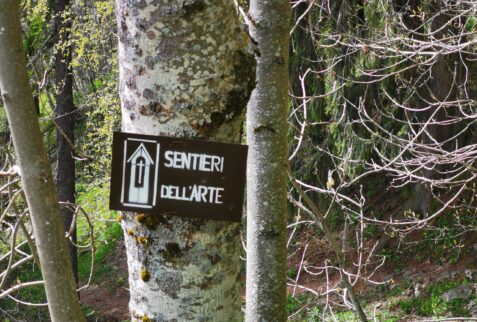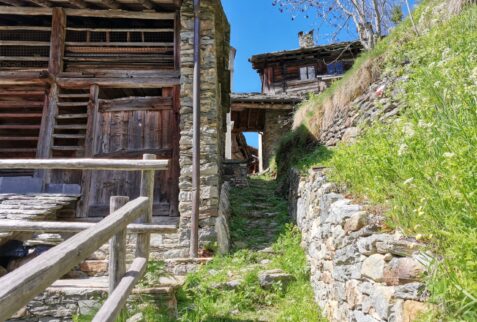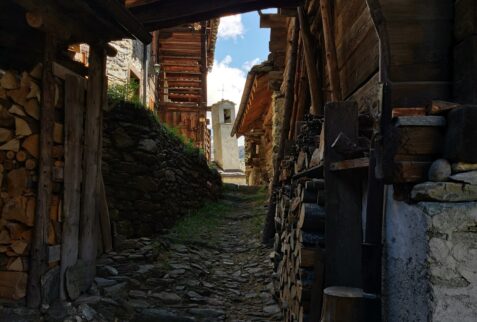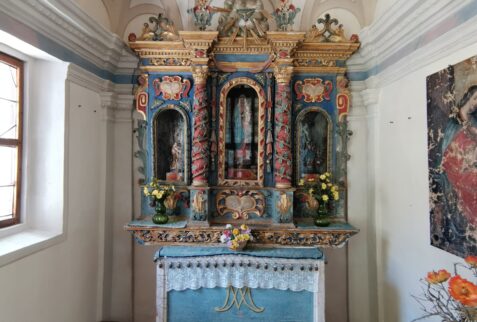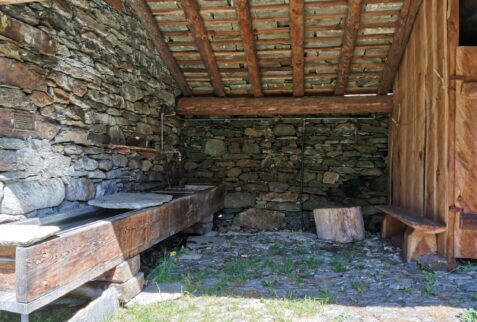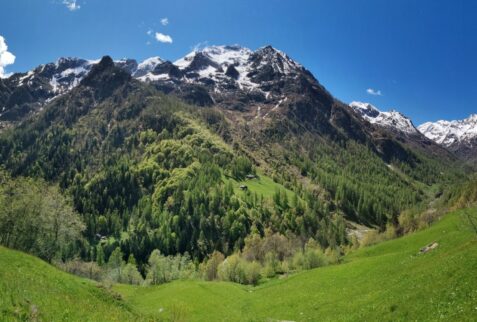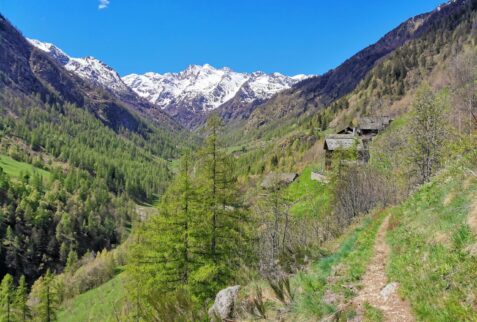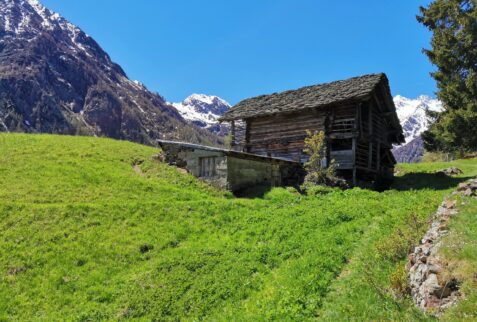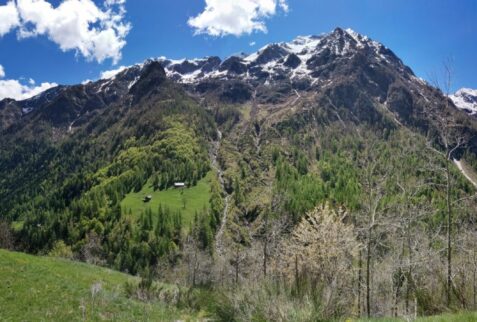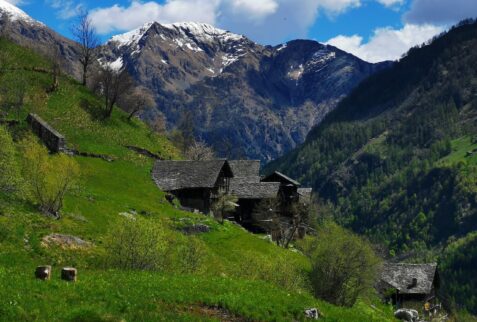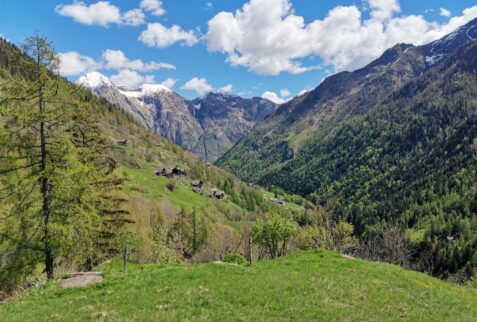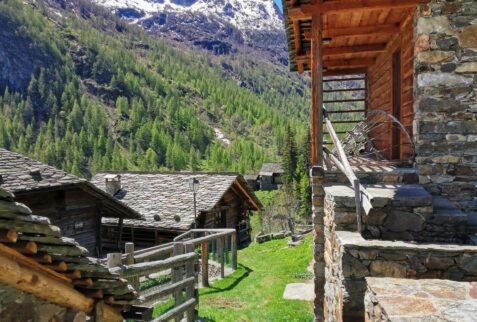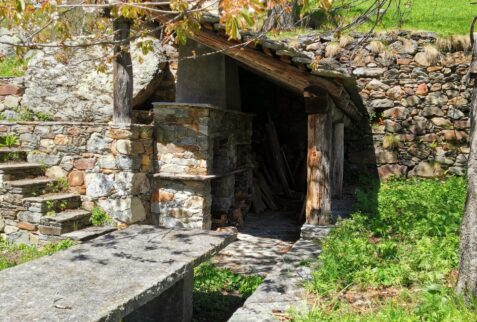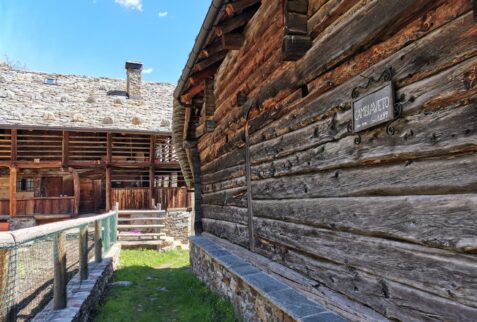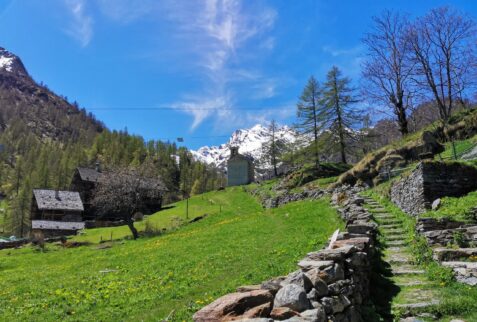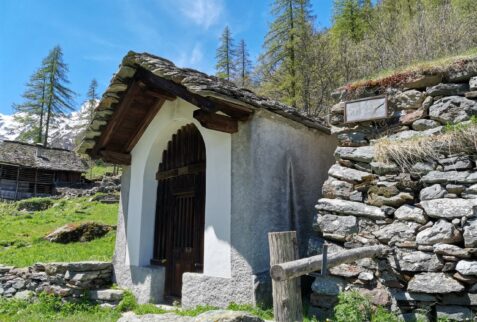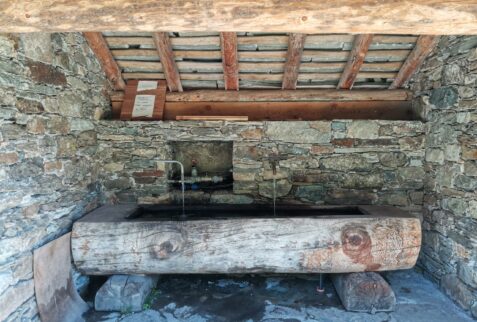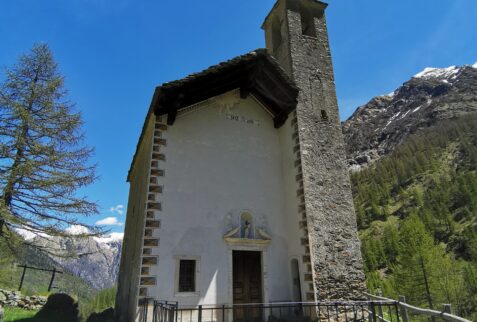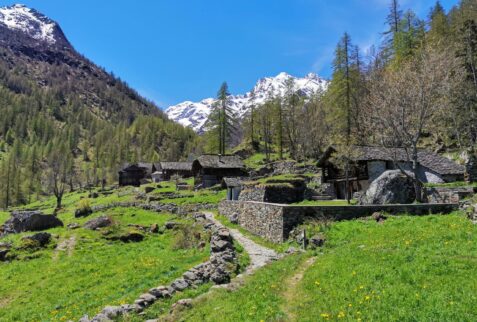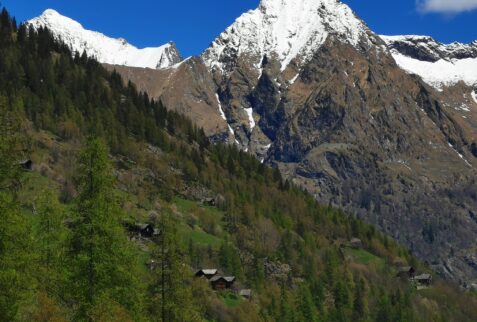Good to Know
Season
Duration
Equipment needed
Difference in altitude
Val Vogna - Piemonte
Alta via dei Walser
In the upper Valsesia, in Val Vogna, it is possible to take a wonderful panoramic path that connects the hamlet of Ca ‘di Janzo with the hamlet of Peccia which takes the name of “Alta via dei Walser“. Along this simple path it is possible to admire the typical Walser huts and visit the museums of local culture, to rediscover the ancient local traditions.
Walser are a population of Germanic origin (from the canton of Valais) present in the Alpine regions around the Monte Rosa massif since the mid-thirteenth century, when some small groups began to migrate to the valleys of Monte Rosa.
The Walser houses, built with whole wooden logs, are still today an architectural expression of great importance. They usually consist of 4 floors, divided as follows:
- The first and second floors have walls with interlocking whole trunks and large loggias for drying the forage and have been used as rooms, workshops and bedrooms. The connection between the first and second floor was guaranteed by external stairs.
- The third and top floors have rough log walls to improve ventilation and have been used as a barn and pantry for food.
- The roof was made of stone (“Piode”). The year of construction was generally engraved on the ridge beam. Furthermore, the Walsers used to place a white stone on the cusp with the aim of warding off evil spirits.
1. Cà di Janzo
The hamlet from which the route starts is 1354 meters high. It consists of seven houses, a fountain and a bread oven.
In 1898 Queen Margherita of Savoy stayed at the former Albergo Pensione Alpina.
2. Oro
Continuing the path, you reach the hamlet of Oro, at 1504 meters height. Today this village is made up of only eight houses due to some fires that destroyed the center houses. During the visit to the village you can stop to cool off at the fountain, with the roof in “Piode” and two basins in larch, and visit the oratory dedicated to S. Lorenzo, a large building with a bell tower that starts from the ground.
3. Cà Vescovo
Leaving Oro behind and crossing the Rio Sasso stream, you reach the hamlet of Cà Vescovo, at 1466 meters height. In this hamlet it is still possible to see on the cusp of the roof of one of the five houses, a white stone which was attributed the magical power of protection from evil spirits.
4. Rabernardo
The hamlet or Rabernardo is relatively large compared to the others and is located at about 1500 meters height. Consisting of 15 Walser houses, it is also composed of the chapel dedicated to the Madonna della Neve, three fountains and three bread ovens. One of the houses in the center of the village has been used as an ethnographic museum: here you can see what life was like for the Walsers until the 19th century
5. Alpe Selletto
This pasture consists of a single house, located at 1435 meters height. From this point you can enjoy an exceptional panoramic point over the entire Val Vogna and the hamlet of Rabernardo. Here you can cool off on the wooden benches and tables while enjoying the wonderful panorama
6. Cambiaveto
The hamlet of Cambiaveto, located at 1499 meters height, was once uninhabited due to the depopulation of the valley and mainly used as a pasture during the summer, but recently renovations have been carried out both on the Walser houses and on the ovens and fountains, bringing the hamlet to life again
7. Peccia
The destination of our trip is the hamlet of Peccia, located at 1.529 meters height. Immediately after the hamlet of Peccia, after crossing the bridge called “Napoleonico“, there is a crossroads that leads on the left to the Maccagno pass (2.495 meters) and, on the right, to Alpe Larecchio (1.895 meters) and to the colle Valdobbia, where is located the Ospizio Sottile (2.480 meters).
It is a rather large village, made up of numerous Walser houses, the fountain, the chapel of San Nicolao and the church of San Grato. Here it is possible to reinvigorate yourself on the wide lawns or cool off in the waters of the artificial lake which is located just before entering the hamlet
If you want more information please contact us using the info box!
To see the image description hold on the mouse pointer on the relative image.






